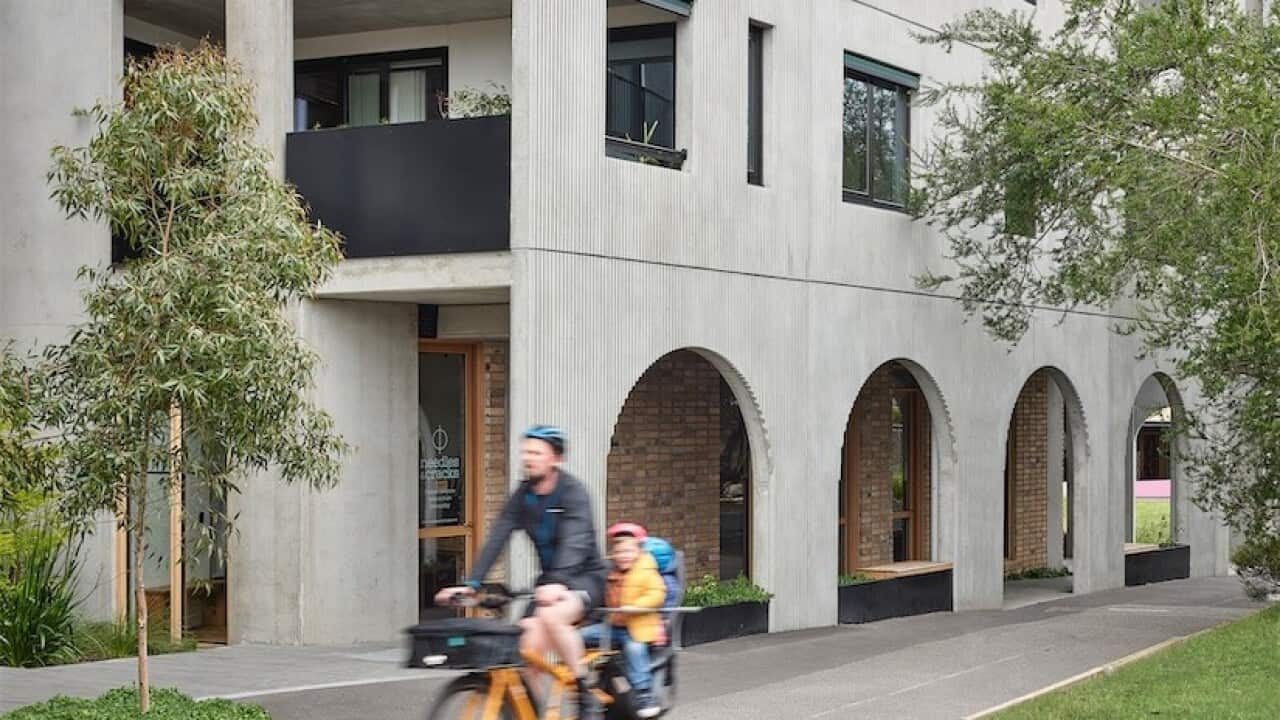In Australia, for example, there is a model called Co-op Housing, which is a kind of co-operative housing system, whereby the management of a number of properties is handled by tenants through co-operatives.
The properties do not have to be a single shared building, but can take the form of dwellings ideally within 20 kilometres of each other, explains Liz Thomas, managing director of Common Equity Housing, an umbrella agency for housing cooperatives in Victoria state.
The reciprocity is that, if you want to rent property that is under a housing cooperative, then you must, firstly, be a member of the cooperative, and secondly you must be active in your membership, meaning you may have to take part in various meetings and meetings of the cooperative, even activities such as devotional work.
In Victoria, approximately 2,000 properties are managed by around one hundred cooperatives, with plans to establish more, especially since less than one percent of housing in Australia currently operates under this system.
In Jakarta, there are also some housing units that use a cooperative system, such as Kampung Susun Akuarium in North Jakarta.
At first glance, the village resembles a block house, given its multiple floors and the use of a block system. However, there are significant differences between Kampung Susun Akuarium and typical government-designed flats, as explained by Elisa Sutanudjaja of Rujak Centre for Urban Studies (RCUS), who has been involved in the advocacy, design, and construction of this community.
Kampung Susun Akuarium was originally a typical urban village situated in Penjaringan, near Sunda Kelapa Port. However, in 2016, the village residents faced evictions, resulting in approximately 3,000 people losing their homes, according to Elisa.

Kampung susu Akuarium Credit: Photo courtesy from Alvin Andrean
"One aspect of their collective advocacy was to establish a political agreement with one of the gubernatorial candidates at the time, Anies Baswedan, who ultimately won the election and became governor," Elisa explained.
As part of the political agreement, the DKI Provincial Government was required to implement community action planning across all of Jakarta, while also rebuilding villages that had been forcibly evicted. At least three flats have been completed, including Kampung Susun Akuarium.
"This is largely due to the failure of rusunawa (affordable rental housing) to provide a proper home for eviction victims. Several studies have examined this issue: after being relocated to distant rusunawa, the victims of forced evictions became even poorer, partly due to the design and other factors."
Additionally, they are not given the freedom to engage in the informal economic activities that were a key part of their lives in the village.
According to Elisa, the design of KSA is intended to accommodate informal economic activities, such as setting up stalls or small shops.
To live in KSA, one must be a member of the township cooperative and be part of the displaced community.
Elisa noted that the financing for this village is quite unique, as it does not come from the state budget, but rather from the developer licensing mechanism, known as the SP3L licensing mechanism.
"SP3L is a type of permit where the developer is required to build social housing for low-income individuals, amounting to 20 percent of the total value of the developer's project," she explained.
Kampung Susun Akuarium has earned RCUS two prestigious awards. In 2024, they received the Asia Pacific Innovation Award and a Gold Medal from the World Habitat Award, recognizing their advocacy for decent housing in Jakarta.
"...The Gold Medal is actually an award for advocating the right to decent housing in Jakarta. It's not specific to KSA, but rather highlights the efforts of communities that have emerged from forced evictions and have proposed and implemented solutions for securing the right to decent housing. One of the examples featured in the award is KSA, along with the Ciliwung Children's community, who also organized their own award. This recognition is shared by JRMK and UPC (Urban Poor Consortium)," Elisha explained.
Elisha and her team are also working on another housing project that will operate under a cooperative system. This residential complex, in the shape of a flat, is located in the heart of Jakarta, specifically in Dukuh Atas. Its strategic location is well-connected to six transportation options, including the MRT, Transjakarta bus, and LRT.

One of the alternative residences from the Nightingale Housing project - Anstey' Credit: Supplied: Nightingale Housing project
"We developed a flat on a friend's land and invited six other families to join the venture. As a result, Rujak became one of the residents, occupying the lower floor, while the second and third floors were used for housing."
"This is the antithesis of suburbanisation where people to get decent housing are forced to live far from their workplace or activities and as a result they have to commute far and also fight the assumption that land in the city center is expensive. Yes, it is expensive but there are ways to trick it so that it becomes very affordable and this can also only be achieved if all residents do it collectively. The money is pooled together, there are also cooperatives. So if the basis is profit, it will not be found."
Back in Melbourne, there is an organisation trying to provide quality affordable housing amid a situation often touted as a housing crisis.
The name of the institution is Nightingale Housing.
Today, Nightingale has developed 616 residences in various locations across Australia. These include units of different sizes, ranging from studios and teilhouses to three-bedroom apartments. Nightingale Housing is also committed to constructing environmentally sustainable properties and reducing the reliance on private cars among its residents.
According to Toby Dean, Executive Director of Nightingale Housing, as a non-profit organization, Nightingale Housing does not build and sell properties for profit. Instead, the properties they build are sold at a price that covers the costs incurred, including architect fees, building materials, and the interest paid to the bank for the initial development capital.
Out of the 616 units built, approximately 140 are dedicated to social housing. These units are sold at affordable prices to organisations involved in social or community housing, which then rent them out to individuals in need, particularly those vulnerable to homelessness.
"We believe that the residential property industry can play a key role in addressing housing inequities and insecurity," explains Toby.
Nightingale's approach to property development is unique and comes with its own challenges, but it is not impossible to execute, he adds.










